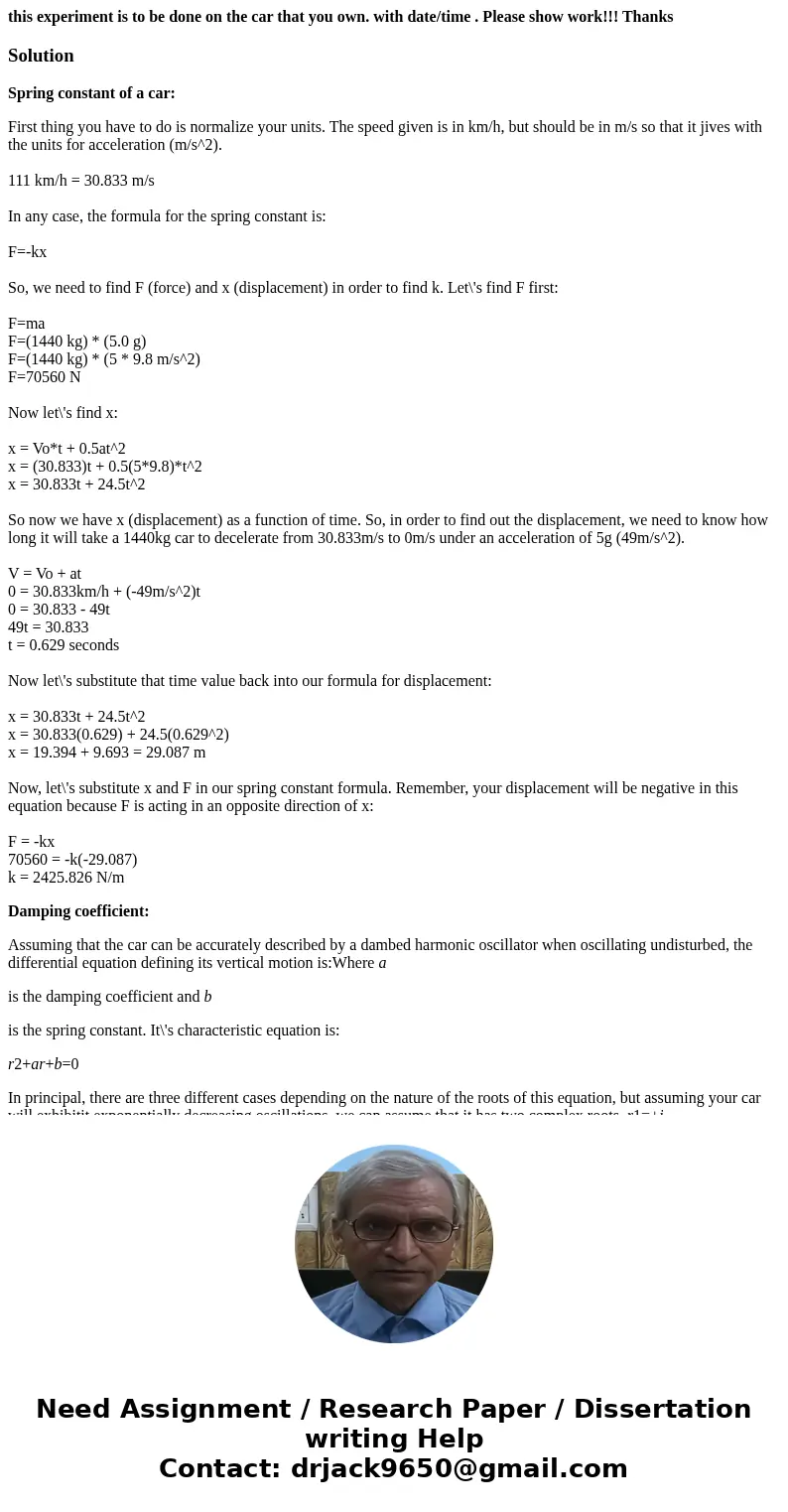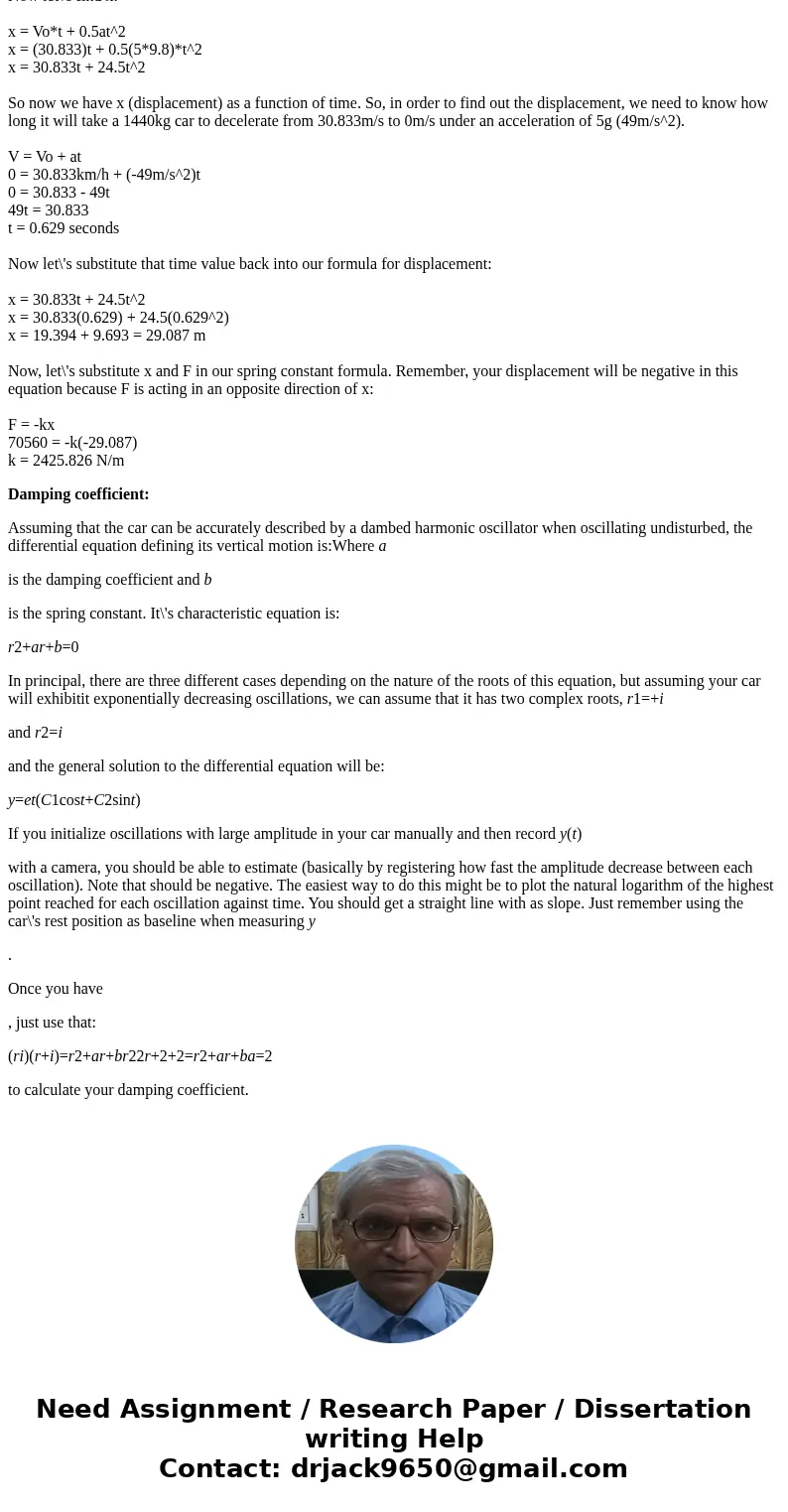this experiment is to be done on the car that you own with d
this experiment is to be done on the car that you own. with date/time . Please show work!!! Thanks
Solution
Spring constant of a car:
First thing you have to do is normalize your units. The speed given is in km/h, but should be in m/s so that it jives with the units for acceleration (m/s^2).
111 km/h = 30.833 m/s
In any case, the formula for the spring constant is:
F=-kx
So, we need to find F (force) and x (displacement) in order to find k. Let\'s find F first:
F=ma
F=(1440 kg) * (5.0 g)
F=(1440 kg) * (5 * 9.8 m/s^2)
F=70560 N
Now let\'s find x:
x = Vo*t + 0.5at^2
x = (30.833)t + 0.5(5*9.8)*t^2
x = 30.833t + 24.5t^2
So now we have x (displacement) as a function of time. So, in order to find out the displacement, we need to know how long it will take a 1440kg car to decelerate from 30.833m/s to 0m/s under an acceleration of 5g (49m/s^2).
V = Vo + at
0 = 30.833km/h + (-49m/s^2)t
0 = 30.833 - 49t
49t = 30.833
t = 0.629 seconds
Now let\'s substitute that time value back into our formula for displacement:
x = 30.833t + 24.5t^2
x = 30.833(0.629) + 24.5(0.629^2)
x = 19.394 + 9.693 = 29.087 m
Now, let\'s substitute x and F in our spring constant formula. Remember, your displacement will be negative in this equation because F is acting in an opposite direction of x:
F = -kx
70560 = -k(-29.087)
k = 2425.826 N/m
Damping coefficient:
Assuming that the car can be accurately described by a dambed harmonic oscillator when oscillating undisturbed, the differential equation defining its vertical motion is:Where a
is the damping coefficient and b
is the spring constant. It\'s characteristic equation is:
r2+ar+b=0
In principal, there are three different cases depending on the nature of the roots of this equation, but assuming your car will exhibitit exponentially decreasing oscillations, we can assume that it has two complex roots, r1=+i
and r2=i
and the general solution to the differential equation will be:
y=et(C1cost+C2sint)
If you initialize oscillations with large amplitude in your car manually and then record y(t)
with a camera, you should be able to estimate (basically by registering how fast the amplitude decrease between each oscillation). Note that should be negative. The easiest way to do this might be to plot the natural logarithm of the highest point reached for each oscillation against time. You should get a straight line with as slope. Just remember using the car\'s rest position as baseline when measuring y
.
Once you have
, just use that:
(ri)(r+i)=r2+ar+br22r+2+2=r2+ar+ba=2
to calculate your damping coefficient.


 Homework Sourse
Homework Sourse